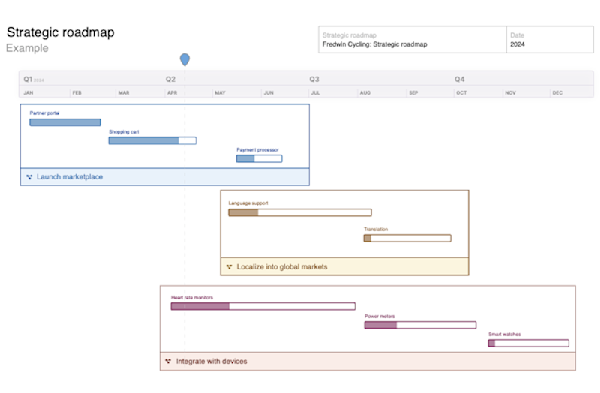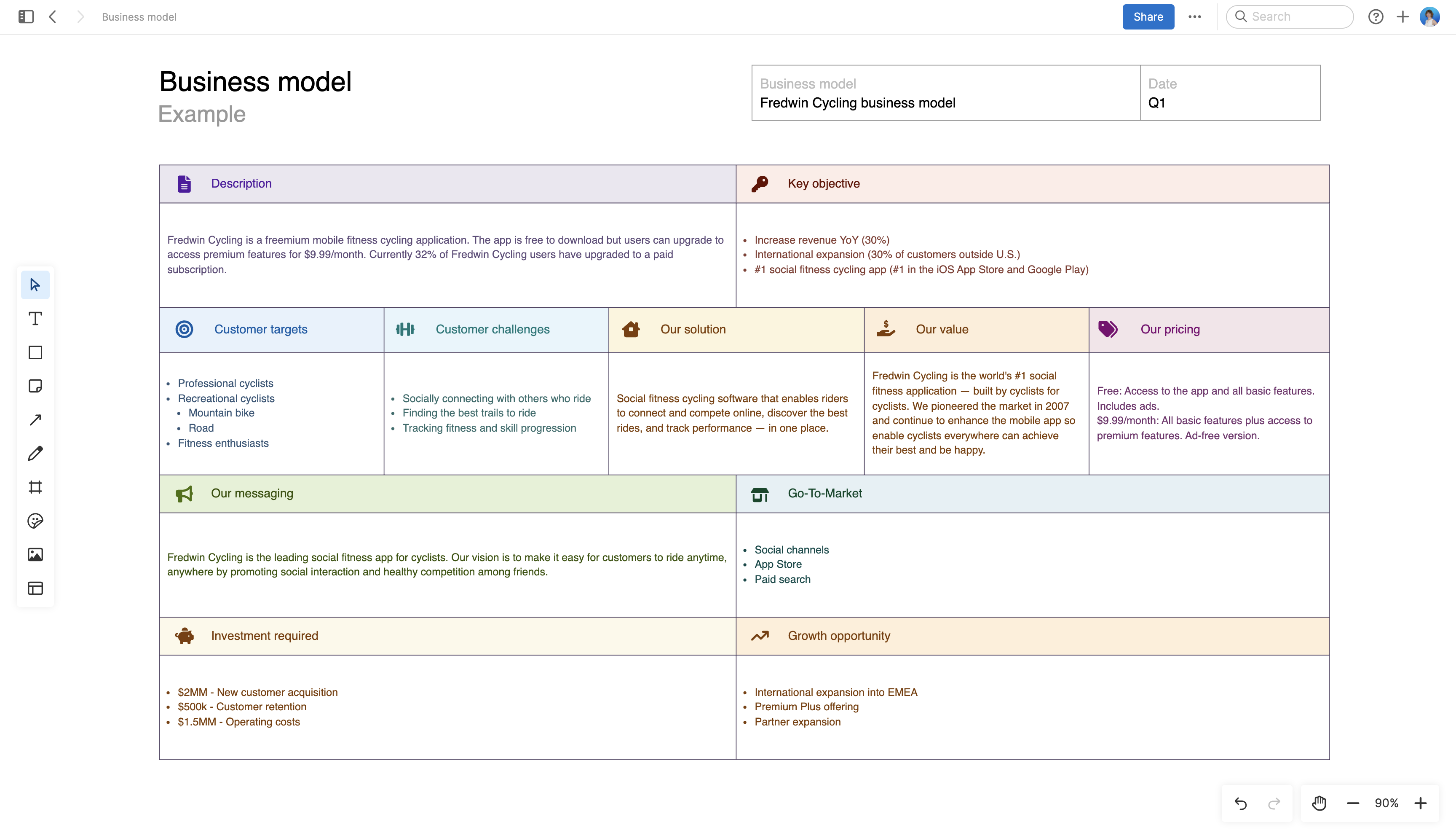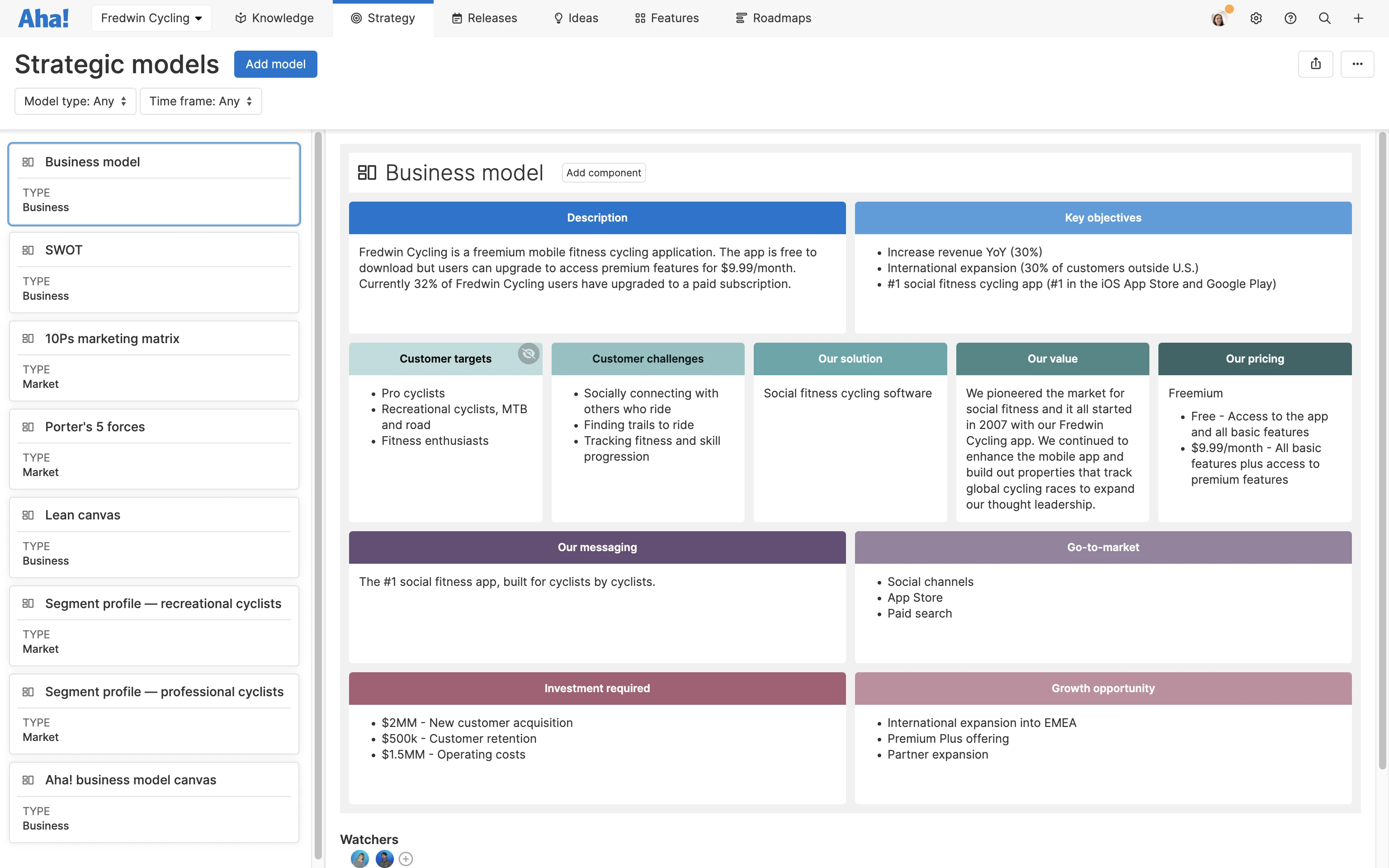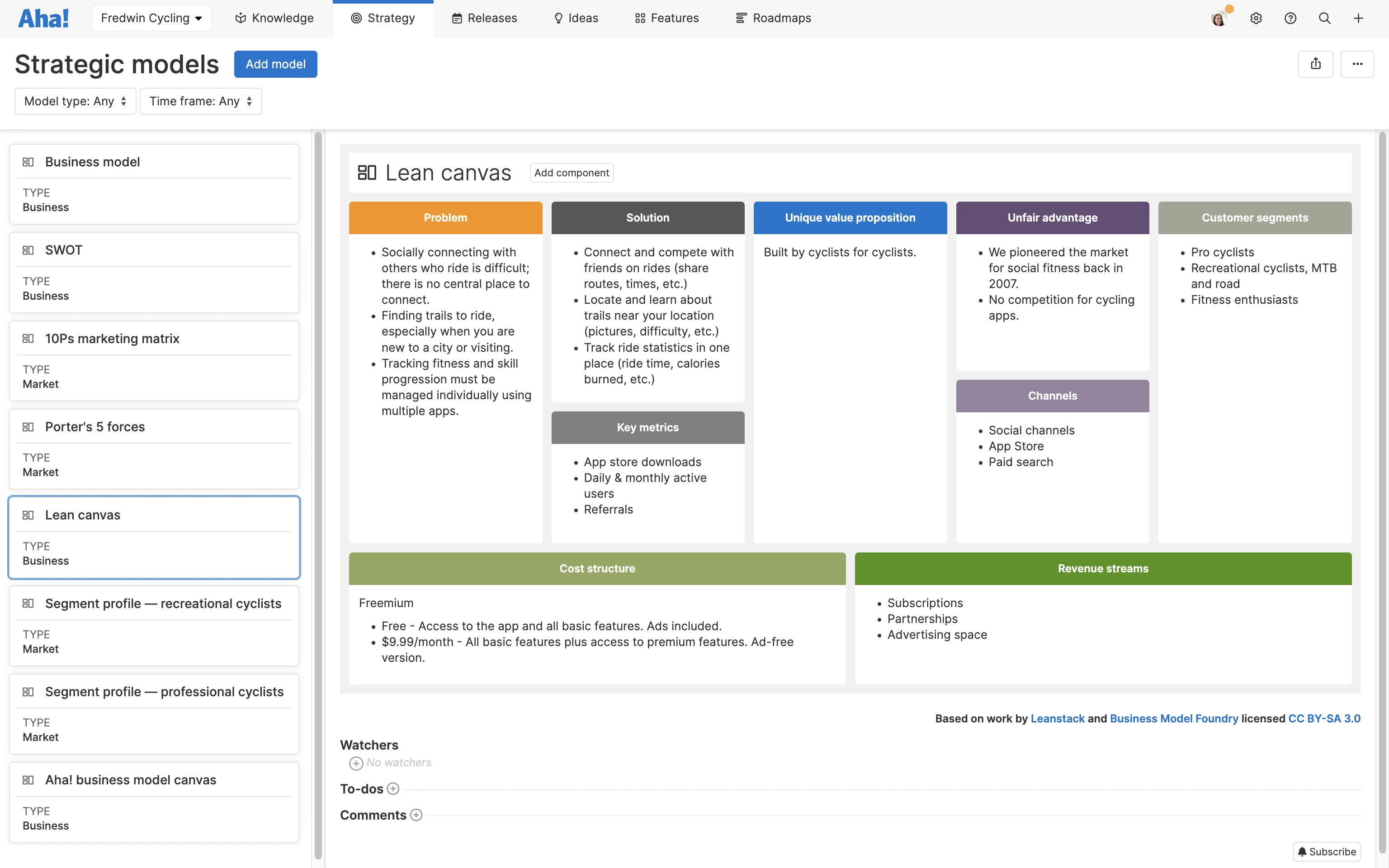How to build a business model step by step
Learn what a business model is — plus how to create one using guided templates
Last updated: October 2025
A business model outlines the value you will provide customers to generate revenue in turn. Learn about the different types of business models and how to create an effective one. |
A business model defines how a company creates value for customers and generates revenue. It outlines the key activities, resources, and strategies needed to deliver products or services effectively.
Companies across every industry and at all stages of maturity need business models. Some rely on lengthy processes to build complicated models, while others move quickly to articulate the basics and take action. Either way, having the discipline to work through this planning tool forces internal alignment.
For established enterprises, a business model is often a living document that is reviewed and adapted over the years. For companies launching products and services or entering new markets, a business model helps ensure that decisions are tied back to the overall business strategy. And for early-stage startups, a simple one-page business model enables founders to explore the mechanics of a business and how you anticipate it will be successful.
Defining and documenting a business model is an essential exercise. Whether you are starting a new venture, expanding into a new market, or shifting your go-to-market strategy, you can use a business model to capture fundamental assumptions about the opportunity ahead and tactics for addressing challenges.
Forward-thinking companies integrate their business model into all aspects of the organization — from recruiting talent to motivating employees. That is why many choose tools that make it possible to quickly build and share a business model. In Aha! software, for example, there are multiple ways to build a model and connect it to everyday work. One of the quickest ways is by using our whiteboard template — featured below.






